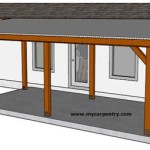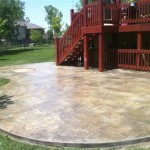Creating a Patio Table in Excel Spreadsheet: Example Code
This article demonstrates how to use Excel spreadsheet software to create a patio table design, offering a practical example and code snippets. While Excel is primarily known for its financial and data management capabilities, it can also aid in visualizing and planning simple woodworking projects like building a patio table.
1. Defining the Patio Table Dimensions
The first step in designing a patio table in Excel is to define its overall dimensions. Create a new spreadsheet and label the columns "Width," "Length," and "Height." In the corresponding rows, enter the desired dimensions of the table. For instance, if you plan for a table with a 60-inch width, 48-inch length, and 30-inch height, you would enter those values in the respective cells.
Next, consider the thickness of the table top and legs. You can include separate columns for "Top Thickness," "Leg Thickness," and "Leg Height" to define these parameters. For a sturdy patio table, you might use a top thickness of 1.5 inches and leg thickness of 2 inches. You can adjust the leg height for a comfortable seating experience.
2. Visualizing the Table Structure
Excel's drawing capabilities can assist in visualizing the table structure. In a separate sheet or section of your spreadsheet, use the "Insert" tab to add a "Rectangle" shape. Adjust the size and position of the rectangle to represent the table top according to the dimensions defined in the previous step.
To represent the table legs, add four more rectangle shapes, positioned at the corners of the table top. Adjust their dimensions to match the "Leg Thickness" and "Leg Height" specified earlier. You can also add a "Line" shape between the corners of the table top and the top of each leg to visually connect them.
You can further enhance the visualization by adding labels to different elements. For example, use "Text Box" shapes to add labels like "Top," "Leg," and "Height" to the corresponding elements. You can also use different colors to distinguish various parts of the table.
3. Calculating Material Requirements
Excel's mathematical functions come in handy for calculating the material requirements. In a separate section of your spreadsheet, create columns for "Material Type," "Quantity," and "Unit Cost." Use formulas to calculate the total area and volume required for different materials.
For instance, to calculate the area of the table top, use the formula "=Width * Length." Similarly, calculate the volume of each leg using the formula "=Leg Thickness * Leg Thickness * Leg Height." By entering the unit cost of the material, you can also calculate the total cost for each material type.
This calculation can be further elaborated by considering the number of legs, the thickness of the frame, and the dimensions of any support beams or additional components you might want for the patio table. You can add rows for each of these elements and adjust the formulas accordingly.
By summarizing the total material requirements and costs, you can create a comprehensive list that helps you estimate the project expenses and plan your material purchases.

Excel Garden Planner Mybackyard

How To Make Tables Using Microsoft Excel Easy Steps

How To Make Tables Using Microsoft Excel Easy Steps

How To Make Tables Using Microsoft Excel Easy Steps

How To Make Tables Using Microsoft Excel Easy Steps
How I Use Excel To Organize A Home Renovation Budget Spending Program Paint Colors Contacts Quotes All About Planners

How To Create A Pivot Table From Multiple Sheets In Excel Xelplus Leila Gharani

3 Ways To Make A Spreadsheet In Excel Wikihow

Adding A Column To Excel Data Using Techniques

How To Publish An Excel Spreadsheet On The Web
Related Posts








